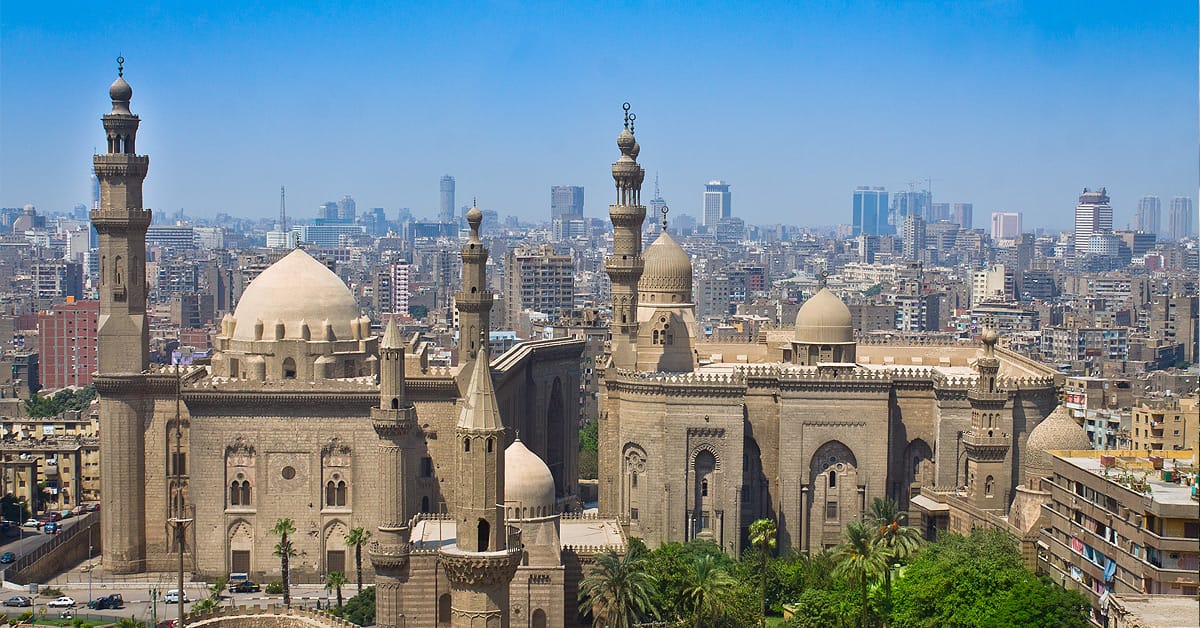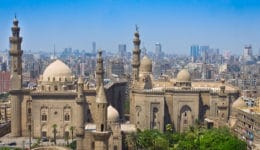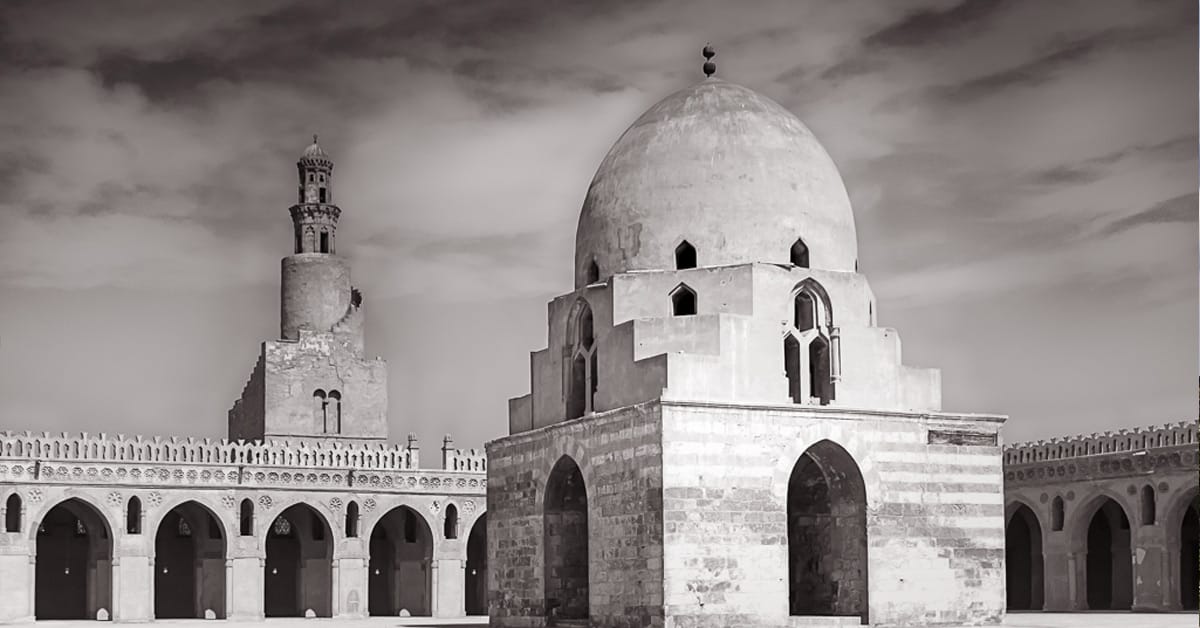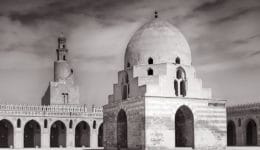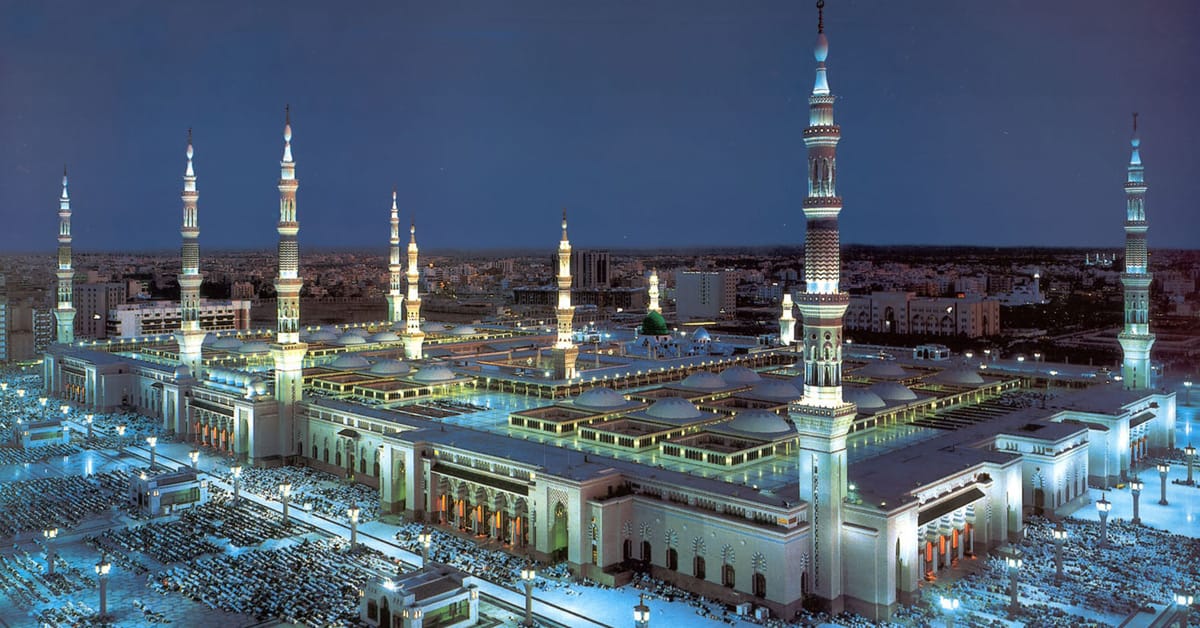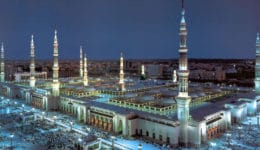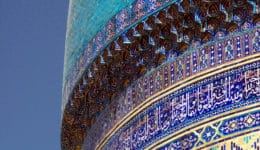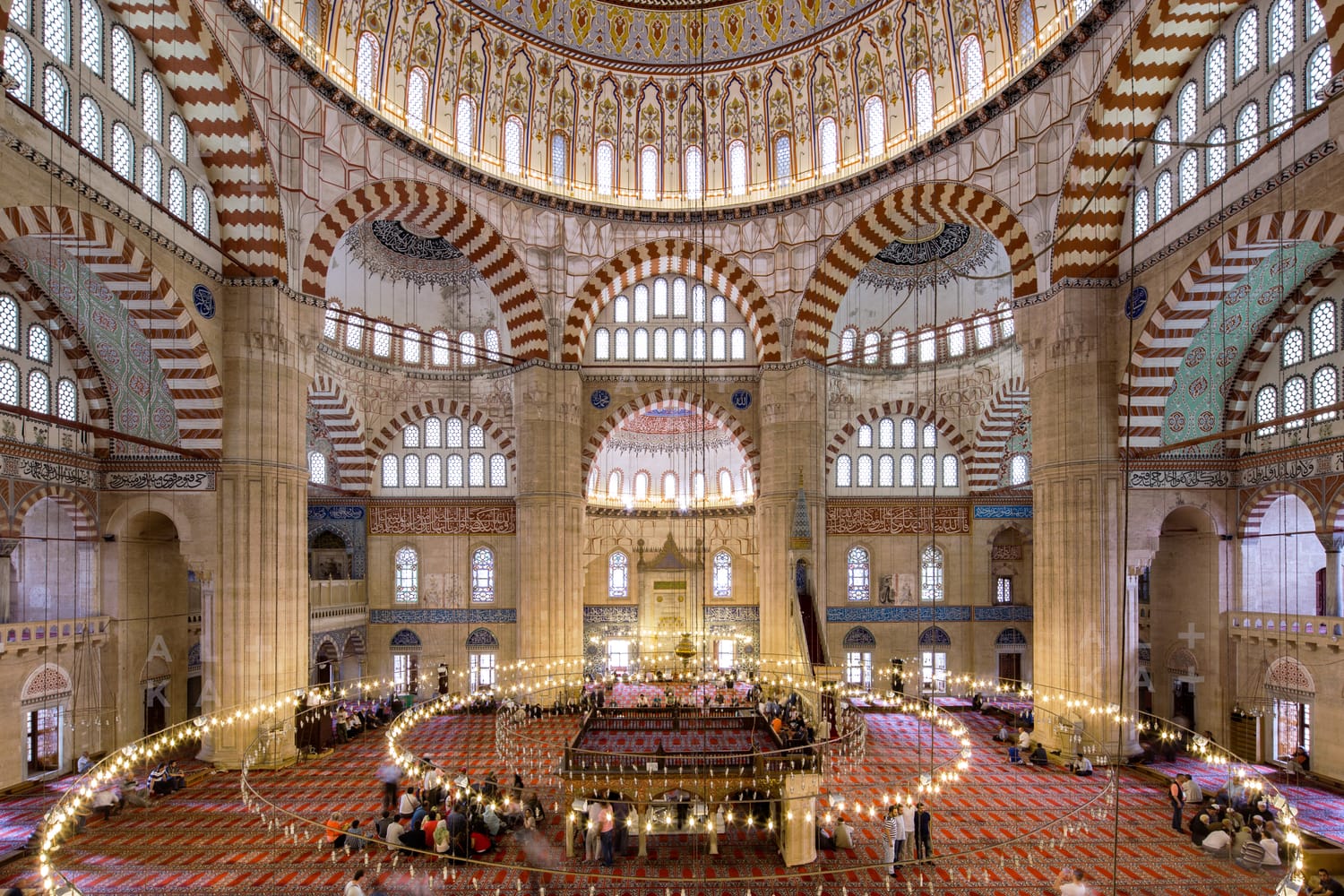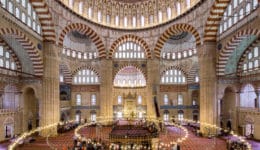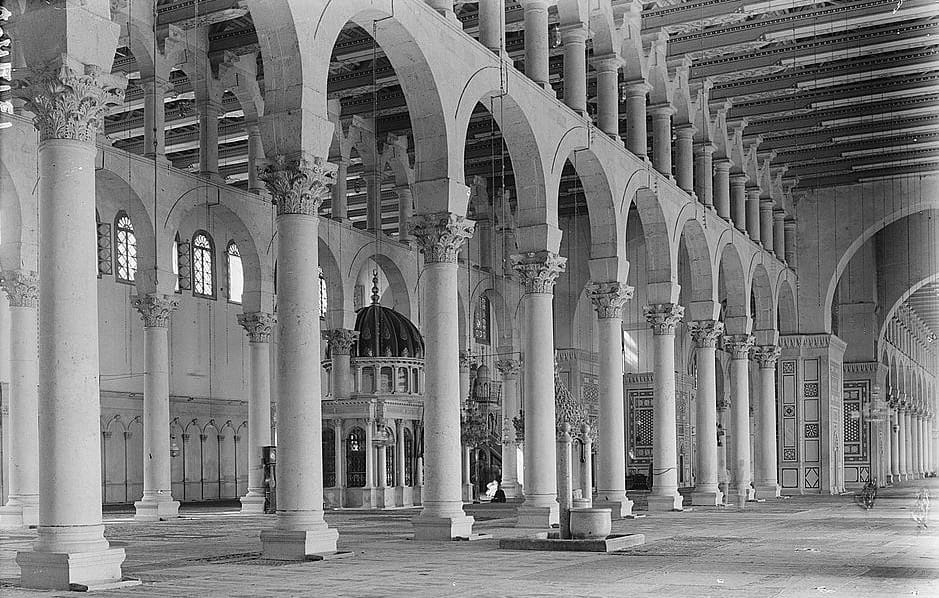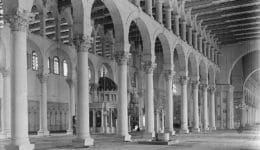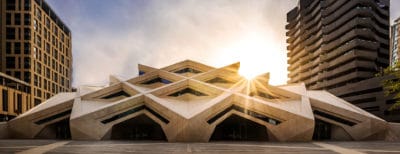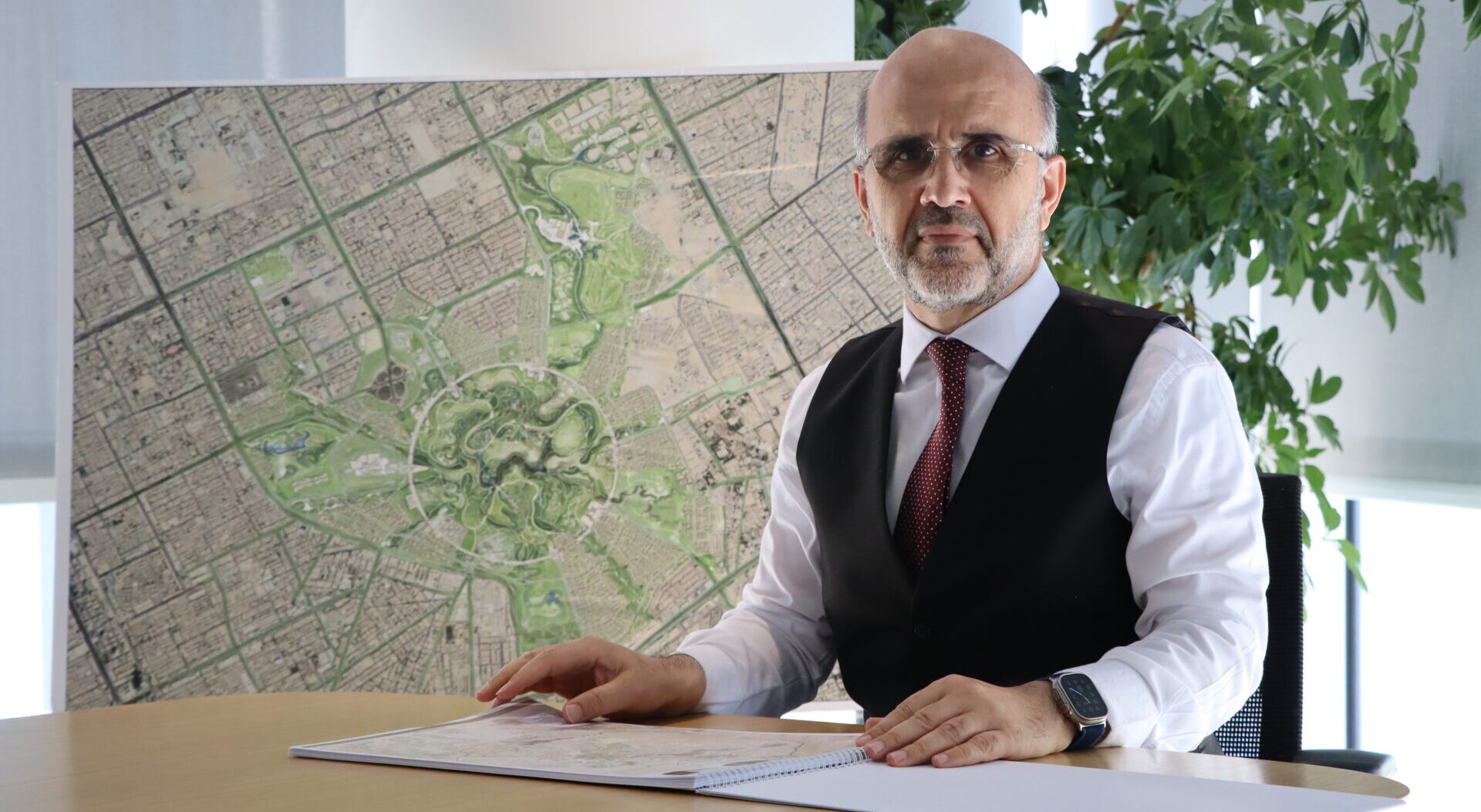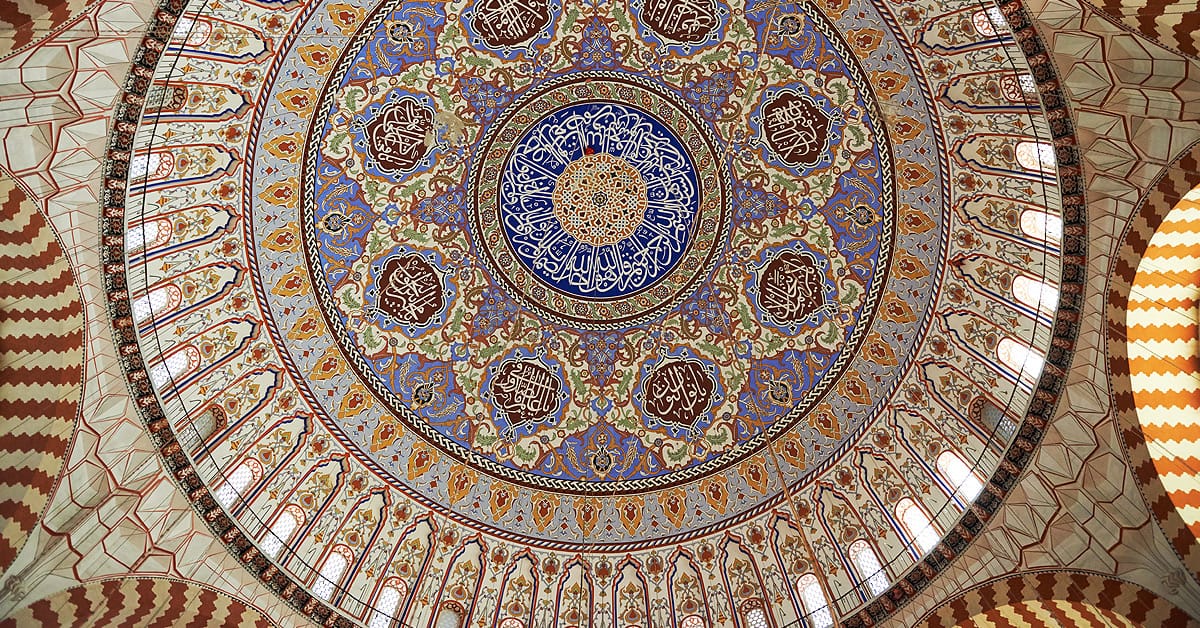 Mosaic dome interior of the the Selimeye Mosque in Erdine, Turkey (1569-1575). Photo © Marynka Mandarinka.
Mosaic dome interior of the the Selimeye Mosque in Erdine, Turkey (1569-1575). Photo © Marynka Mandarinka.
Mosques are more than places of worship — they are community gathering spaces that take a variety of forms depending on their cultural and environmental context. Since the foundation of Islam in the seventh century CE, the architecture of mosques has reflected the various roles they have played in Muslim society, including educational, civic, ceremonial, celebratory, and social purposes, in addition to their primary function as a place for prayer.
By: Nihad Alamiri – Marketing Manager. April 2017
The laws of Islam do not mandate the shape or form of sacred spaces in which the rituals of prayer are performed. In other words, the architecture of a mosque is not determined primarily by religious doctrine. The one essential requirement is for the space to accommodate rows of worshippers standing behind an imam. This alone is sufficient; everything else is discretionary. Over time, the characteristic shapes of mosques evolved primarily in response to the variety of secular functions they supported at different times and in different places.
In addition, the design of a mosque is not specific to any particular rite or denomination of Islam. Unlike the architecture of Christian churches, for example, which may in some cases designate whether a congregation is Catholic, Protestant, or Orthodox, every mosque serves as a place of prayer for all Muslims. The design of mosques has evolved as a reflection of symbolic values and as an expression of the identity of Muslim communities throughout the ages and across the Muslim world.
Early Evolution of Mosque Design
The first mosques — the word comes from the Arabic masjid, meaning “place of worship” — were often simply an allocation of an open space in the center of town where Muslims could congregate and pray. The only consistent defining spatial characteristic of these early mosques was their orientation toward Mecca, the site of the ancient mosque, called Masjid al-Haram, at the center of which stands the holy Kaaba. Additional spatial and architectural conventions began to spring up in response to social and climatic conditions. For example, a covered section was often provided to shelter worshipers from extreme heat along the qibla wall facing Mecca. A prayer niche, or mihrab, would customarily designate this wall so that pilgrims would immediately understand which way to direct their prayers.
Beyond these basic features, most of the rest of the mosque was given over to an open courtyard, especially in the case of a mosque in the center of town, where thousands would congregate on Fridays for communal prayer. This simple, legible, and replicable spatial prototype would evolve into the first formal expression of covered, hypostyle mosques, known for their forest-like arcades and columns. Variations of this model include the first mosque in Medina, known as the Quba Mosque, established in 622 CE; the Kairouan Mosque in Tunis (670 CE); and the Umayyad mosque in Damascus (715 CE). The latter two examples incorporated column details from ancient Greek and Roman sources, but in a vast gridded configuration with modified arches. More than a dozen doorways connected the open courtyard to the covered prayer hall on the side nearest the qibla wall. Despite their varied configurations, mosques from the early days of Islam developed according to an underlying type that is fundamentally mutable, able to accommodate expansions and improvements over time. Rather than a closed or complete form, the mosque typology exemplifies a kind of “open form.”
Subsequent mosques gained more complexity and diversity in their designs. The prayer halls became larger, and the simple courtyard was surrounded by more-elaborate arcades. Minaret towers — functionally designed to amplify the call to prayer throughout the neighborhood — were handsomely ornamented by artisans. Certain ornamental traits became hallmarks of particular periods. Mosques of the Fatimid Caliphate (909–1167 CE) in North Africa, for example, are notable for combining eastern and western architectural motifs, assimilating Byzantine, Syrian, Greek, and Mamluk traditions within a hypostyle plan. The following dynasty, called the Ayyubid (1167-1260), also based in Egypt, ushered in an era of military-inspired mosque architecture, such as the mosque of the Citadel of Aleppo, built in the early 13th century CE. The early to middle Ottoman Empire, from about 1300 to 1600, ushered magnificent centrally planned mosques recognizable by their stacked domes and half-domes, with Byzantine-inspired motifs. Today, most mosque styles are still associated with these grand periods of Islamic architecture.
Yet such stylistic classifications denote only the surface treatment, while the more-substantive differences lay in the spatial organization and qualities of the mosques. Starting in the 12th century CE, the main prayer hall of important mosques began to acquire a major dome or a series of cupolas supported on structural piers, creating a more-spacious, column-free enclosure accommodating hundreds of worshippers in a unified spatial gesture. The domed prayer hall progressively became the most dominant feature of the mosque, absorbing the open courtyard.
Indeed, during the Ottoman period, beginning about 1300 CE, the courtyard was reduced to an ante-room. By the middle of the sixteenth century, Ottoman mosques achieved unprecedented height and majesty through the elaboration of a series of cascading domes buttressing the main dome over the central prayer hall, as seen in the Süleymaniye Mosque in Istanbul (1550-1557) and the Selimeye Mosque in Erdine (1569-1575), both UNESCO World Heritage sites, designed by the great engineer-architect Mimar Sinan. Madrasas (Islamic schools), a covered market, clock house, and library surround the prayer hall of the Selimeye Mosque, exemplifying the diversified social role of the mosque complex.
In a future post, we will discuss the fascinating challenges and opportunities that face contemporary architects involved with preserving and adapting historic mosques, as well as designing new ones.






